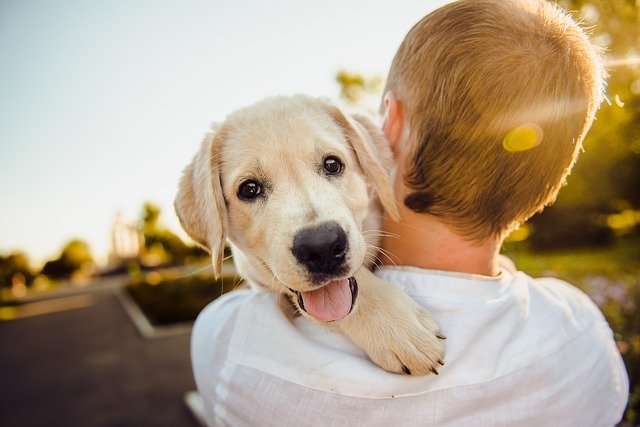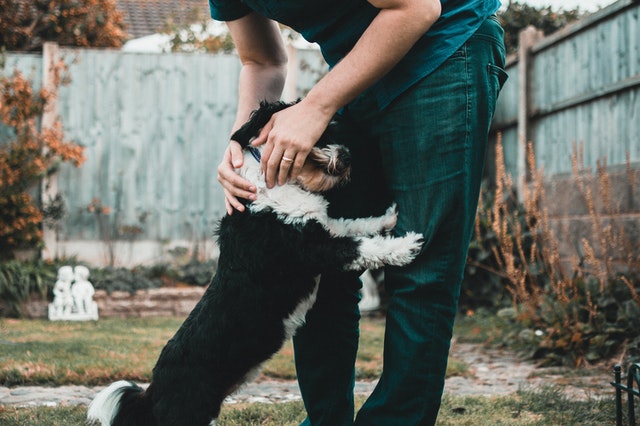Best practices of training a puppy to COME!

Training a puppy to come on command is as cool as it is essential! For the simple reason of safety, this should be one of her first command to learn. In fact, if you can only choose one skill for your puppy to learn in her lifetime, this will be the one to go.
Before moving on with the actual training, here are some Do,s and Don'ts for a much smoother and pleasant learning journey for both you and your new puppy.
For practical methods on training a puppy to come, click here
Remember: You don't have to use the word 'Come' as the actual command. You could use ' Come here', 'Double down' or whatever make sense to you.
5 Do's of training a puppy to come
1. Do start training young
Young puppies have the innate instinct to stay close to their pack leader, namely you! This help training a puppy to come to you a lot more natural and easily. The instinct fades however as your puppy grows with age and confidence so don't let it goes to waste! Start training 'Come' early!
2. Do start off in a less distracting environment
The golden rule of early recall training; Only call your puppy when she is most likely to responds. And the best place to start is an environment void of distractions like your quiet room or the corridor. After consistent success, move training to places with a little more distractions but still safe like your garden or yard. Gradually building her focus along the way.
The end-goal in mind being able to call and get your puppy running back to you responsively and consistently regardless of where and when. In fact, the training can only be deem successful if she could ultimately respond to your calls in distracting environments like a busy street or park. Achieving this however, will take time and baby steps. If she can't seems to perform in a more distracting environment, go back to a less distracting one.

3. Do involve your family
Keep it consistent among everyone in the household and reduce the chance of your puppy being confuse by everyone's different training standards. Mixed signals might result in inconsistent responds from your puppy among your family members or weaken the recall command itself.
For consistent sake, all members of your family are recommended to engage your puppy in the recall training to some capacity with you as the pack leader and overall 'Supervisor'. It is crucial they use the same word as the recall command and understand the best practices of positive training. You never know when any of your family will need the call command to remove your dog swiftly and reliably from danger!
4. Do use different commands for different recall objectives
The command 'Come' should always signify fun, attention or rewards. Don't dilute that positive effect with less than attractive events for example; Stepping into the vet's clinic where she is known to dread her routine check-up or perhaps going back indoor after walks because while going home isn't exactly negative, it is a less fun activity compared to going out. So, use different commands for different recalls!
5. Do only use 'Come' positively
Every 'Come' should be a positive prelude of things or events be it a new toy, a treat or a walk. It should be the start of anything your puppy will enjoy. This alone is key to the success of training a puppy to come consistently with responsiveness.
On the flip side, never use 'Come' in associate with negativity. Don't chase after your puppy or forcefully restraint her if she runs away from you instead of coming. Reprimands or punishments must never be use with the command too. In fact, your puppy could tell just by the tone of your 'Come' when you are frustrated. She might not grasp the source of your agitation but you can bet she will be less motivated to come to you next time!
Remember, even a few negative experiences could led to your puppy second guessing your intent. Should a safety situation arise, the last thing you want is your dog hesitating and a delayed respond to your call.

3 Don'ts of training a puppy to com
1. Don't use the name of your puppy
Your puppy's name should always be use to only get her attention and NOT associate with any command. Main reason being your puppy's name are being used throughout the day, everyday. You can imagine how confusing it is for her to try and figure out when do you really mean 'Come', ultimately lessening the impact of the calls and reliability when you need it the most.
2. Don't overuse the command
During the early days of training a puppy to come, avoid stressing your puppy out by breaking up sessions to about four or five times over the course of a day with each session consist of not more than three 'Come' practices regardless whether the session goes well or not.
Overusing the 'Come' command will also risk weakening its impact and urgency. Especially once your puppy is all grew up, calling her all the time over insignificant events or rewards will cause her to tune you out or delaying her responds.
So once you feel your puppy has mastered the command well enough, cut down on using it gradually but not completely. Eventually, a couple of practices weave into daily but varied situations will suffice. Just remember to make those infrequent calls especially rewarding!
3. Don't form bad habits by linking routine commands
One of the more common mistake in training a puppy to come is unintentionally linking follow-up commands. For example; Using 'Come!' and then 'Follow!' is all well and good but doing it most of the time develops an unwanted habit. It builds up her anticipation instead of organically responding to your next instruction. In this case, there might be times when you want her to perhaps 'Stay' or 'Sit' instead of following you. So, remember to mix things up during training!
Another great way to prevent accidentally linking commands is teaching your puppy the 'Release'. Think of 'Release' like the full stop of a sentence, an end to the current command. Preventing misunderstanding is 'Release' greatest value. For example; Your puppy which you 'Stay' will resist the urge to 'Follow' or 'Come' to you even if you are walking away from her unless she is being 'Release' via a trained pat, sound, or visual cue from you!
Techniques and tips on Training a Puppy to Come
Go to Training Your Puppy to Stay
Go back to How to Train a Puppy
Go back to New Puppy Care Guide (Homepage)
- Home
- Puppy Training
- Puppy Recall Do's & Don'ts